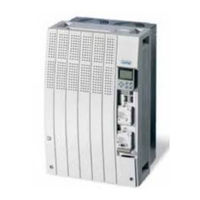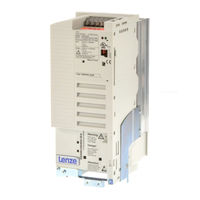Lenze 8200 vector E82EV303K4B Manuals
Manuals and User Guides for Lenze 8200 vector E82EV303K4B. We have 2 Lenze 8200 vector E82EV303K4B manuals available for free PDF download: System Manual, Mounting Instructions
Lenze 8200 vector E82EV303K4B System Manual (588 pages)
0.25 kW...90 kW
Table of Contents
-
Section 2
11 -
Section 3
33 -
-
-
Important Notes125
-
-
Shielding132
-
-
-
-
-
Function Modules181
-
-
-
Function Modules197
-
-
-
Function Modules215
-
-
-
8 Commissioning
233-
-
Vector Control244
-
-
-
Important Notes255
-
-
Menu Structure278
-
-
-
-
Contents286
-
Important Notes287
-
Operating Mode289
-
-
Speed Range317
-
Current Limits319
-
-
-
Quick Stop324
-
DC Braking (DCB)326
-
AC Motor Braking328
-
-
-
-
Troubleshooting461
-
-
-
Function475
-
Selection487
-
-
Possibilities501
-
Selection502
-
-
-
-
Pressure Control527
-
Speed Control535
-
-
-
Important Notes551
-
Advertisement
Lenze 8200 vector E82EV303K4B Mounting Instructions (288 pages)
Table of Contents
-
Deutsch
7-
-
-
Verdrahtung46
-
English
101-
-
Conventions Used104
-
Notes Used105
-
-
3 Technical Data
115 -
-
Important Notes119
-
-
-
Important Notes138
-
Wiring140
-
-
7 Commissioning
167
-
-
Français
193-
-
-
Câblage232
-
-
Advertisement

